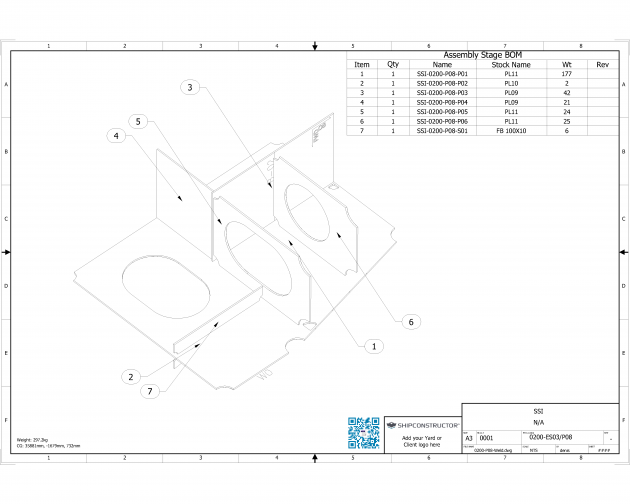
It was about 2 years ago where I told our sales and marketing team that I thought QR Codes were a dying technology.
However, since then I have changed my opinion and see real value in QR Codes not only in sales and marketing but in ship building. It really started when I stumbled across some articles on how QR Codes were being used. One of the cool workflows I saw that really started getting me thinking about QR codes was using QR Codes as a way to authenticate a user for a website service.
The way it worked was the user first authenticated their phone as an authorized device on the system. This was done by providing a phone number and entering a code which was texted to the phone which was to be authenticated. Once the phone was authenticated successfully it now acted as the user’s credentials with no need to remember usernames and passwords.
To log into the website the user would be presented with a QR Code which usually would be where the user enters their username and their password. At this time the user would scan the QR Code which would validate the user (only if using the previously authorized device). Once authorized (just by scanning the QR Code) the user would be logged in. There was a lot of stuff that was happening in the background but it was really abstracted from the user so I will not get into details about that in this blog.
The very simply UX for the any user to log into the system got my juices flowing on how the ship building industry can use QR Codes.
QR Codes in Shipbuilding today
Since then I have seen some customers using QR Codes with ShipConstructor. One example is EAS who generate a QR Code on production documentation which they publish. Every time a new revision of the drawing is published, a new QR code is generated.
What this allows is when someone on the shop floor is working on a drawing they can easily find out if the drawing is the latest revision. I think we all know the challenges with ensuring the shop floor is using the latest drawing. When the shop floor personnel scans the QR Code it simply tells them if the drawing is the latest version or if it is out-of-date. This very simple check has significantly improved the quality of production deliverables as well as reduced the time to build the vessel due to always building with the latest information. Simple and powerful.
QR Codes potential in Shipbuilding
As I mentioned I have a new respect for QR Codes and see many opportunities to use it within the ship building industry. Here are just a few areas where I see QR Codes being used in our industry:
1. Accessing the latest version of a drawing
You can use a QR Code to load the latest version of the drawing in PDF, PNG or even a DWG assuming you have an app which can read DWGs. Once the drawing is loaded you can verify it is the latest revision and even use it to start the feedback loop (future blog post).
2. Accessing supplementary information
Currently our work packages contain a lot of information which are spread over many many sheets. In a work package there are many documents which relate to one another which we are not able to “link” via the printed sheets. For example, if you look at an assembly drawings and a corresponding drawing that represents its weld information, in some cases there may be one drawing which contains all the information but this may lead to a cluttered and hard to read drawing.
So how can QR Codes help?
You can have QR codes on a printed document which link to the supplemental documents.
For example, the assembly drawing below has a QR Code which links to the weld information of this assembly.
3. Setting data
One supported type of QR Code is just URL’s (i.e. ssi-corporate.com). With the support of URL’s and with many modern applications implementing a REST API there are endless possibilities. In essence without getting into the details of REST, what you are able to do is have the QR Code link to perform an action. An example would be if you have completed an assembly which the drawing package defines, you can have a QR Code which the foreman scans to signal the completion of that assembly. This would in turn set all the welds as welded, the assembly stage as complete, etc. in your ERP system or ShipConstructor. This is so awesome for so many reasons. The foreman does not need to do virtually any additional work; information gets back to the systems (ERP, MRP, MES, PLM, PDM, ShipConstructor, etc.) where it now has up-to-date information and this is all done automatically.
Closing Remarks
I do not know what I was thinking when I thought QR Codes was a dead technology, and I am so glad that I “relearned” it. It was a lesson for me to make sure I keep my eyes open as what is one of the technologies I think will make many of you more productive was almost ignored.
I really just scratched the surface with how I think QR Codes can be used in the marine industry but the ease of implementation and User Experience (UX) makes this technology very exciting. There are current clients using QR Codes today and I really hope there are many more which I do not know of, if you are please let me know ?. You can expect many more blog posts talking about QR Codes and you will start to see many more yards utilizing QR Codes.


